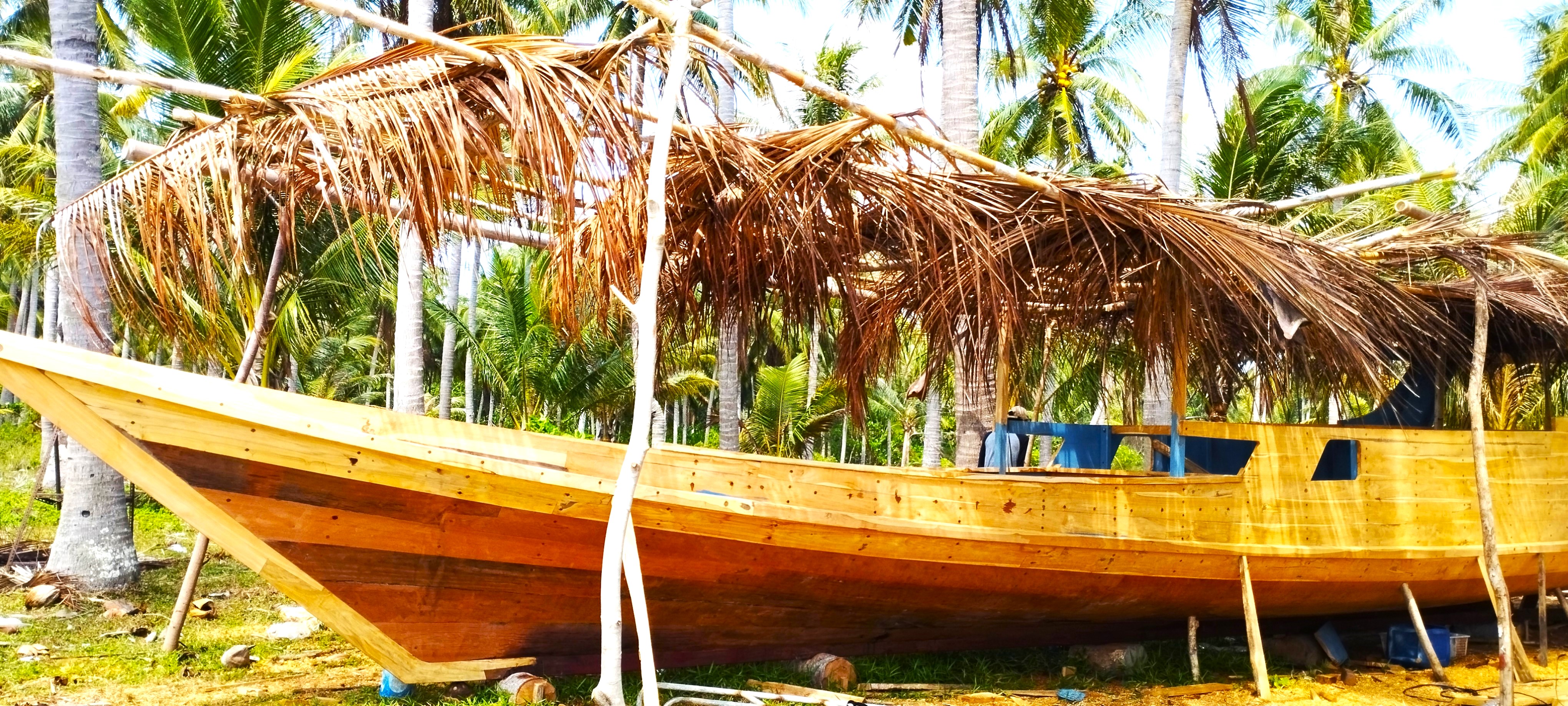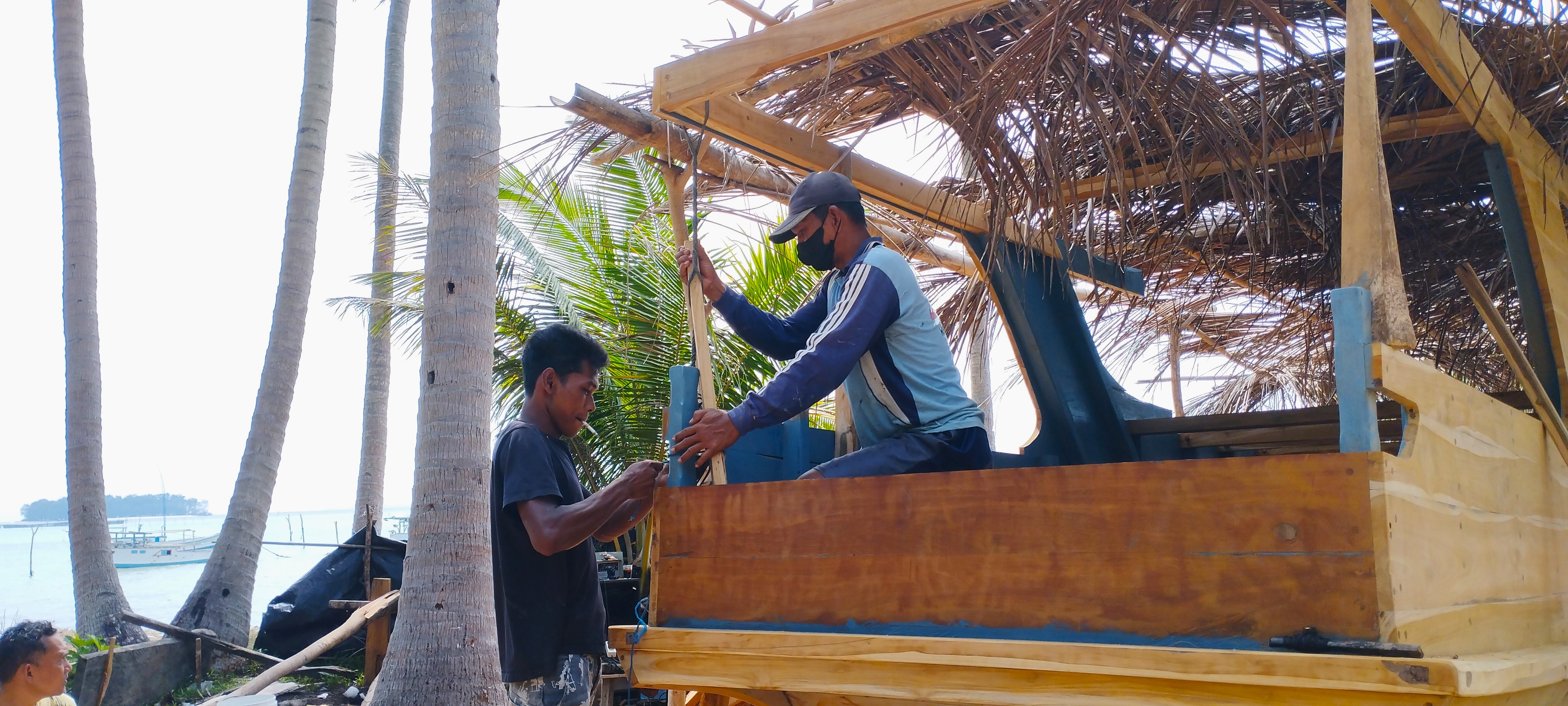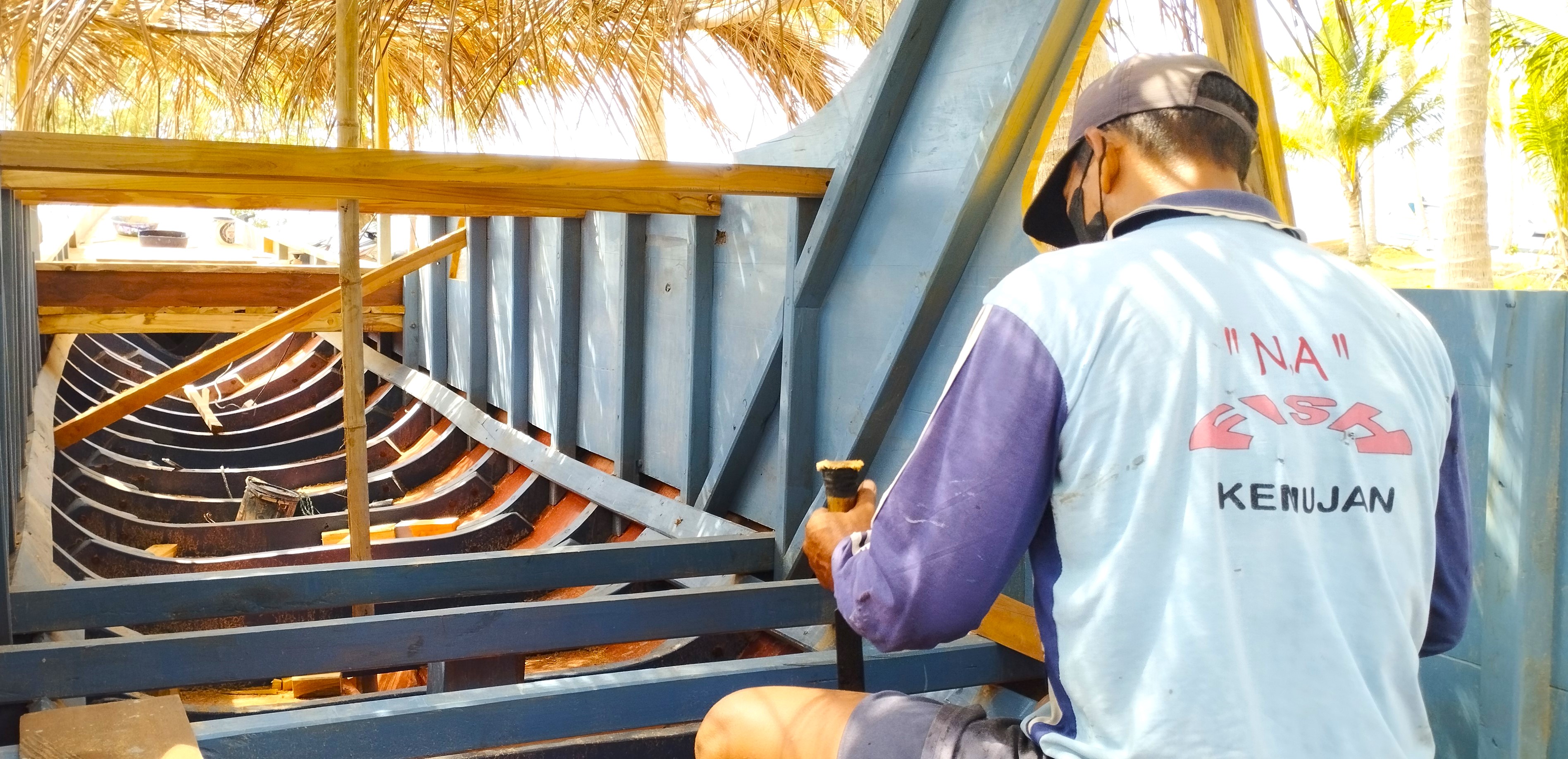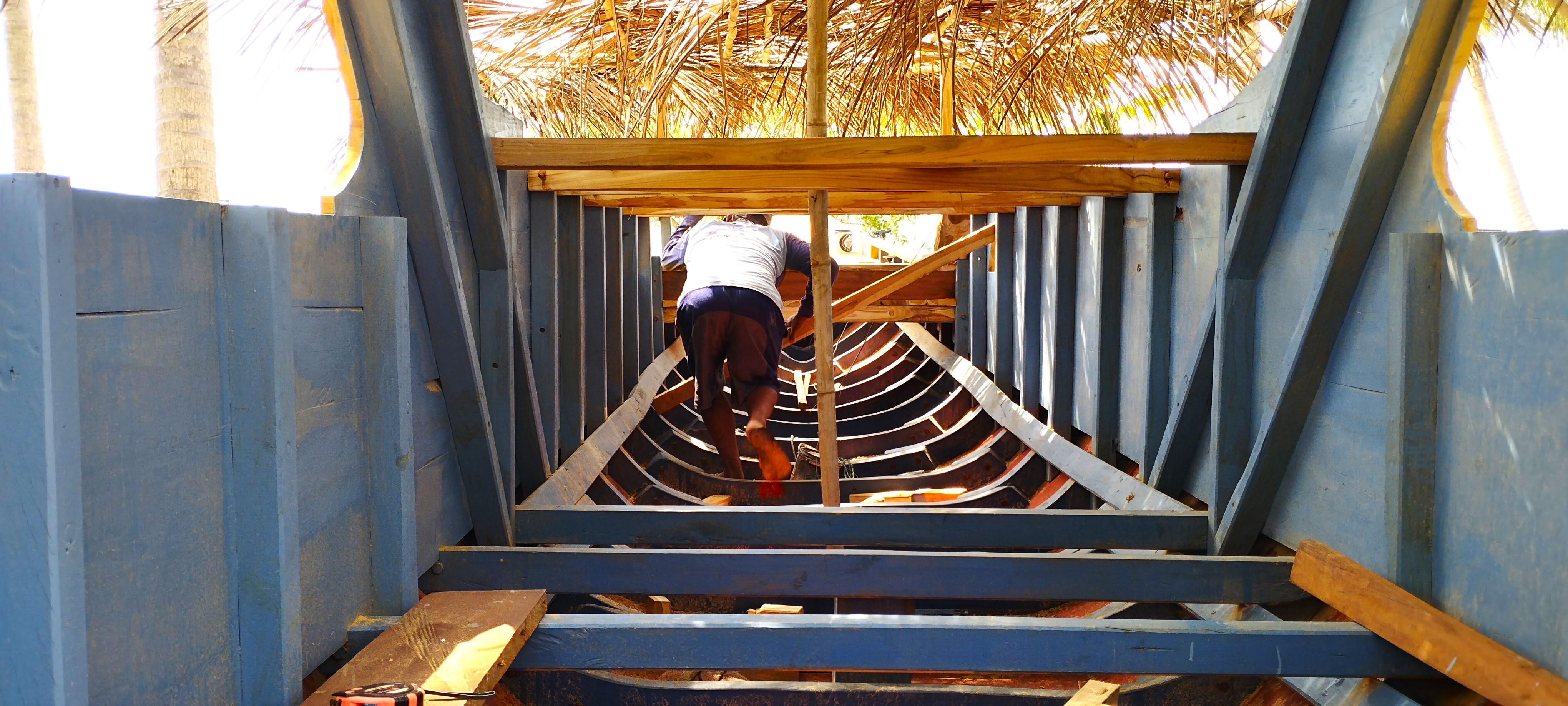
Amidst The Whispers of The Wood and The Rhythm of The Waves, Unfolds The Timeless Tale of The Traditional Kemujan Boat
Exploring Karimunjawa Island by pedaling a bicycle is like netting a variety of new colorful experiences. The asphalt roads are not so wide, uniting travelers with residents with friendly greetings every time they meet them. This cycling trip is heading west of Karimun Island, namely Kemujan Village. This village is a place of residence for various ethnic groups who have various customs, cultures, and traditional arts that have developed, there are the Makassar, Bugis, Mandar, Buton, Batak, Madura, and Javanese tribes. Precisely along the coast of Merican Beach, many descendants of the Bugis tribe have settled since decades ago.
Rows of wooden stilt houses will be different few the scenery in the village. In the middle of the vast expanse of blue ocean in Kemujan Village, Karimunjawa Island, the lives of the people are inseparable from the long-rooted marine traditions. This village is inhabited by most of the descendants of the Bugis tribe who are known for their expertise in processing wood and building boats. The calm atmosphere of the village, decorated with the sound of the waves touching the shore, implies the depth of the relationship between the Kemujan people and the sea.
The wooden boats that are the mainstay of the fishermen of this village are not just a means of transportation, but also a symbol of culture and the strength of tradition that has been passed down from generation to generation. In Kemujan, the art of boatmaking begins with the careful selection of wood, a process that demands the utmost attention and wisdom. Teak and ironwood, revered for their strength and resilience against the relentless force of seawater, are the favored choices. Only the most exceptional pieces are chosen, as experienced boat builders know that the foundation of a vessel lies in its materials. The right wood ensures not only the boat’s enduring strength but also its ability to withstand the challenges of the sea, promising a legacy of durability and grace on the water.

“This is my brother’s order. I was only asked to make it. We brought this wood from Kalimantan, sent it by boat and it took five days to get here. We use Ulin for the ship's hull because it is strong and waterproof. For other parts, we can use teak wood,” said Jarna, a man who has been a boatman in the village for almost 20 years.
Amid the gentle breeze of the beach, the hum of electric wood tools never ceases. With skilled hands and a patient heart, they cut, carve, and shape the timber into a robust boat. Jarna's strong hands are seen crafting wooden pegs, shaped like nails, to bind the ship together. These pegs, unlike traditional iron nails, are made from Ulin wood—known for its durability—ensuring the boat's lasting strength and unity.
In every stroke of the hammer and chisel, they remember the teachings of their ancestors, who taught them how to assemble boats with incredible precision. Every inch of wood that is tightly and carefully fitted is a form of respect for the tradition that has existed since the time of their ancestors. One boat with a length of 20 meters and a width of 6 meters, can be completed in 60 days. This means that in two months the boat will be ready to sail. After the boat is finished, the process that takes a little longer may be processing painting.

For the Kemujan community, boat building is a cultural ceremony that involves many hands and souls. Not only the boatmen are involved, but also family and neighbors. Over time, this process becomes a moment to strengthen ties, share stories, and remember the past. Each completed boat brings new stories and hopes for its owner who will sail the sea, looking for countless natural resources.
One of the interesting aspects of making these wooden boats is the way they use traditional tools. Everything is done by hand, with precision, and skills that are passed down from generation to generation. Even in every scratch on the wood, there is a story to be told: about the struggle of fishermen who fight against the fierce waves, about their love for the sea, and about how they keep the tradition alive.

When the wooden boat is completed, it becomes more than just a vessel for livelihood—it transforms into a masterpiece, alive with the spirit and soul of the Kemujan people. A reflection of the unyielding strength, resilience, and beauty of Bugis culture, it stands firm against the tides of time. These boats sail across the vast ocean, carrying with them stories and traditions that never fade, symbols of a people’s enduring struggle. They navigate the waters, proud and steadfast, preserving their ancestral heritage for generations, a living testament to the pride and perseverance of Kemujan’s heart.

Tag: accomodation, beach, birdwaching, coffe, community, culture, culturelovers, cycling, ecotourism, experience, explore, familytravelers, farmer, fishing, hiking, history, hospitality, humaninterestfotographer, indonesianculturaltourism, indonesianhistorytourism, indonesiantourism, landscapefotographer, local, locallovers, localtea, nature, naturelovers, traditional, travel, travelersfotographer, trekking, visit
